This article was medically reviewed by Joel Warsh, MD. Dr. Joel Warsh is a board certified Pediatrician and the Owner & Founder of Integrative Pediatrics and Medicine in Los Angeles, California. With over a decade of experience, Dr. Warsh specializes in holistic and integrative medicine. He holds a Bachelor’s degree in Kinesiology and Health Sciences, a Master’s degree in Epidemiology and Community Health, and a Doctor of Medicine (MD) from Thomas Jefferson Medical College, where he was elected president of the Jefferson Pediatric Society. Dr. Warsh then completed his Pediatric Residency at Children’s Hospital of Los Angeles (CHLA), where he received the George Donnell Society Research Fellow.
There are 21 references cited in this article, which can be found at the bottom of the page.
This article has been viewed 148,004 times.
If your baby has jaundice, you're not alone—in fact, for newborn infants, jaundice is the most common condition diagnosed and treated by pediatricians. About 50% of full-term infants and about 80% of preterm infants develop jaundice. This common condition occurs when newborns have difficulty breaking down bilirubin, a yellow-colored pigment of red blood cells. The main symptom of jaundice is a yellow tint to the skin and whites of the eyes. In cases where newborns require medical attention for jaundice, treatment is usually effective.[1]
Steps
Prevention
-
1Test your blood early in your pregnancy. There are certain blood types that conflict between mother and baby. If the mother’s blood cells access the baby’s by crossing the placenta, the mother can form antibodies which lead to jaundice in the newborn.
- ABO as well as RH incompatibility can lead to jaundice and can be detected in an early blood test.
- Blood type incompatibilities can be prevented with an RH-immune globulin administered at twenty-eight weeks in the pregnancy.[26]
-
2Anticipate jaundice in your newborn. Feed your baby often, since you can help your newborn to keep bilirubin levels manageable by increasing bowel movements in the baby. Even if your baby hasn’t been diagnosed with jaundice, you can anticipate the possibility of an increase in bilirubin levels and reduce those levels.
- Eight to twelve feedings daily will help in reducing the risk of an onset of significant jaundice.[27]
-
3Avoid lifestyles that can lead to preterm labor and birth. High bilirubin levels resulting in jaundice occur in eighty percent of preterm babies. Bilirubin levels were found to be high, almost without exception, in babies born at thirty-five weeks or less[28] increasing the risk of jaundice.[29]
- Refrain from smoking cigarettes—they increase the chances of preterm birth. Secondhand smoke also increases the likelihood of preterm birth.
- Drug use contributes to preterm birth.
- Alcohol consumption can also contribute to the likelihood of preterm birth.[30]
Expert Q&A
-
QuestionHow do you check for jaundice at home?
 Joel Warsh, MDDr. Joel Warsh is a board certified Pediatrician and the Owner & Founder of Integrative Pediatrics and Medicine in Los Angeles, California. With over a decade of experience, Dr. Warsh specializes in holistic and integrative medicine. He holds a Bachelor’s degree in Kinesiology and Health Sciences, a Master’s degree in Epidemiology and Community Health, and a Doctor of Medicine (MD) from Thomas Jefferson Medical College, where he was elected president of the Jefferson Pediatric Society. Dr. Warsh then completed his Pediatric Residency at Children’s Hospital of Los Angeles (CHLA), where he received the George Donnell Society Research Fellow.
Joel Warsh, MDDr. Joel Warsh is a board certified Pediatrician and the Owner & Founder of Integrative Pediatrics and Medicine in Los Angeles, California. With over a decade of experience, Dr. Warsh specializes in holistic and integrative medicine. He holds a Bachelor’s degree in Kinesiology and Health Sciences, a Master’s degree in Epidemiology and Community Health, and a Doctor of Medicine (MD) from Thomas Jefferson Medical College, where he was elected president of the Jefferson Pediatric Society. Dr. Warsh then completed his Pediatric Residency at Children’s Hospital of Los Angeles (CHLA), where he received the George Donnell Society Research Fellow.
Board Certified Pediatrician Check your baby's skin, eyes, and tongue—they might have a yellow tint if your baby has jaundice.
Check your baby's skin, eyes, and tongue—they might have a yellow tint if your baby has jaundice. -
QuestionWhat is the fastest way to measure jaundice in newborns?
 Joel Warsh, MDDr. Joel Warsh is a board certified Pediatrician and the Owner & Founder of Integrative Pediatrics and Medicine in Los Angeles, California. With over a decade of experience, Dr. Warsh specializes in holistic and integrative medicine. He holds a Bachelor’s degree in Kinesiology and Health Sciences, a Master’s degree in Epidemiology and Community Health, and a Doctor of Medicine (MD) from Thomas Jefferson Medical College, where he was elected president of the Jefferson Pediatric Society. Dr. Warsh then completed his Pediatric Residency at Children’s Hospital of Los Angeles (CHLA), where he received the George Donnell Society Research Fellow.
Joel Warsh, MDDr. Joel Warsh is a board certified Pediatrician and the Owner & Founder of Integrative Pediatrics and Medicine in Los Angeles, California. With over a decade of experience, Dr. Warsh specializes in holistic and integrative medicine. He holds a Bachelor’s degree in Kinesiology and Health Sciences, a Master’s degree in Epidemiology and Community Health, and a Doctor of Medicine (MD) from Thomas Jefferson Medical College, where he was elected president of the Jefferson Pediatric Society. Dr. Warsh then completed his Pediatric Residency at Children’s Hospital of Los Angeles (CHLA), where he received the George Donnell Society Research Fellow.
Board Certified Pediatrician Use a light-based measuring tool that detects jaundice on the skin. You can always get your baby's blood tested, too.
Use a light-based measuring tool that detects jaundice on the skin. You can always get your baby's blood tested, too. -
QuestionHow can I lower my baby's jaundice at home?
 Joel Warsh, MDDr. Joel Warsh is a board certified Pediatrician and the Owner & Founder of Integrative Pediatrics and Medicine in Los Angeles, California. With over a decade of experience, Dr. Warsh specializes in holistic and integrative medicine. He holds a Bachelor’s degree in Kinesiology and Health Sciences, a Master’s degree in Epidemiology and Community Health, and a Doctor of Medicine (MD) from Thomas Jefferson Medical College, where he was elected president of the Jefferson Pediatric Society. Dr. Warsh then completed his Pediatric Residency at Children’s Hospital of Los Angeles (CHLA), where he received the George Donnell Society Research Fellow.
Joel Warsh, MDDr. Joel Warsh is a board certified Pediatrician and the Owner & Founder of Integrative Pediatrics and Medicine in Los Angeles, California. With over a decade of experience, Dr. Warsh specializes in holistic and integrative medicine. He holds a Bachelor’s degree in Kinesiology and Health Sciences, a Master’s degree in Epidemiology and Community Health, and a Doctor of Medicine (MD) from Thomas Jefferson Medical College, where he was elected president of the Jefferson Pediatric Society. Dr. Warsh then completed his Pediatric Residency at Children’s Hospital of Los Angeles (CHLA), where he received the George Donnell Society Research Fellow.
Board Certified Pediatrician Feed your baby a little extra breast milk or formula to get your baby peeing and pooping a little more, which can help clear up the jaundice.
Feed your baby a little extra breast milk or formula to get your baby peeing and pooping a little more, which can help clear up the jaundice.
Warnings
- Untreated jaundice can lead to severe problems such as damage to the brain or the central nervous system.[31]⧼thumbs_response⧽
Things You'll Need
- A hospital-grade rental breast pump, if baby doesn't breastfeed well or often enough.
References
- ↑ http://www.babycenter.in/a89/newborn-jaundice#ixzz45Lc9f75P
- ↑ http://med.stanford.edu/news/all-news/2015/09/filtered-sunlight-a-safe-low-tech-treatment-for-jaundice.html
- ↑ Joel Warsh, MD. Board Certified Pediatrician. Expert Interview. 20 July 2021.
- ↑ http://www.medscape.com/viewarticle/851205
- ↑ Joel Warsh, MD. Board Certified Pediatrician. Expert Interview. 20 July 2021.
- ↑ http://www.webmd.com/parenting/baby/understanding-newborn-jaundice-treatment
- ↑ http://americanpregnancy.org/breastfeeding/breastfeeding-and-jaundice/
- ↑ http://www.webmd.com/parenting/baby/understanding-newborn-jaundice-treatment
- ↑ Joel Warsh, MD. Board Certified Pediatrician. Expert Interview. 20 July 2021.
- ↑ http://www.mayoclinic.org/diseases-conditions/infant-jaundice/basics/lifestyle-home-remedies/con-20019637
- ↑ http://www.emedicinehealth.com/newborn_jaundice/page4_em.htm#newborn_jaundice_home_remedies
- ↑ http://www.nhs.uk/Conditions/Jaundice-newborn/Pages/Treatment.aspx
- ↑ http://www.mayoclinic.org/diseases-conditions/infant-jaundice/basics/lifestyle-home-remedies/con-20019637
- ↑ Joel Warsh, MD. Board Certified Pediatrician. Expert Interview. 20 July 2021.
- ↑ http://www.mayoclinic.org/diseases-conditions/infant-jaundice/basics/symptoms/con-20019637
- ↑ http://www.nhs.uk/Conditions/Jaundice-newborn/Pages/Treatment.aspx
- ↑ http://www.mayoclinic.org/diseases-conditions/infant-jaundice/basics/lifestyle-home-remedies/con-20019637
- ↑ https://www.nlm.nih.gov/medlineplus/ency/article/001559.htm
- ↑ http://www.emedicinehealth.com/newborn_jaundice/page2_em.htm#newborn_jaundice_symptoms
- ↑ http://www.babycenter.in/a89/newborn-jaundice#ixzz45LcR2imF
- ↑ Joel Warsh, MD. Board Certified Pediatrician. Expert Interview. 20 July 2021.
- ↑ Joel Warsh, MD. Board Certified Pediatrician. Expert Interview. 20 July 2021.
- ↑ http://www.mayoclinic.org/diseases-conditions/infant-jaundice/basics/tests-diagnosis/con-20019637
- ↑ http://www.mayoclinic.org/diseases-conditions/infant-jaundice/basics/lifestyle-home-remedies/con-20019637
- ↑ http://www.mayoclinic.org/diseases-conditions/infant-jaundice/basics/complications/con-20019637
- ↑ http://www.cerebralpalsy.org/about-cerebral-palsy/risk-factors/blood-incompatibility
- ↑ http://www.nytimes.com/health/guides/disease/newborn-jaundice/overview.html
- ↑ http://www.uptodate.com/contents/hyperbilirubinemia-in-the-premature-infant-less-than-35-weeks-gestation
- ↑ http://ephtracking.cdc.gov/showRbPrematureBirthEnv.action
- ↑ http://ephtracking.cdc.gov/showRbPrematureBirthEnv.action
- ↑ http://www.nhs.uk/Conditions/Jaundice-newborn/Pages/Complications.aspx
About This Article
To treat simple, uncomplicated jaundice in your newborn, expose them to filtered sunlight either through a polarized window inside or by taking them outside in a covered stroller for 5 minutes twice daily. The filtered sunlight will help your baby’s body to remove the excess bilirubin that causes jaundice from their system. Be careful not to expose your infant to direct sunlight, which can be harmful to their skin. You should also increase your baby’s daily feedings to help your baby have more bowel movements, which help to remove bilirubin. To treat more severe jaundice, your doctor might recommend light therapy for your baby. For this method, your baby will be placed under special lighting that helps them get rid of the harmful bilirubin more rapidly. If your baby’s bilirubin levels are still high, your doctor may order a blood transfusion to replace bilirubin-heavy blood with bilirubin-free blood to reduce the levels quickly. For more tips from our Medical co-author, like how to reduce the risk of jaundice, keep reading!




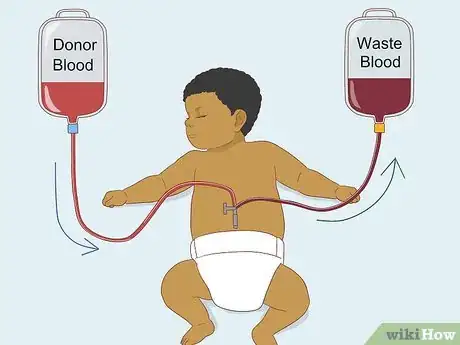
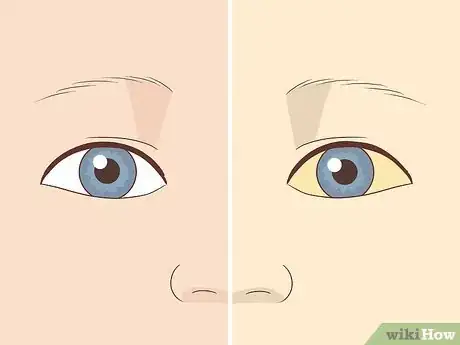
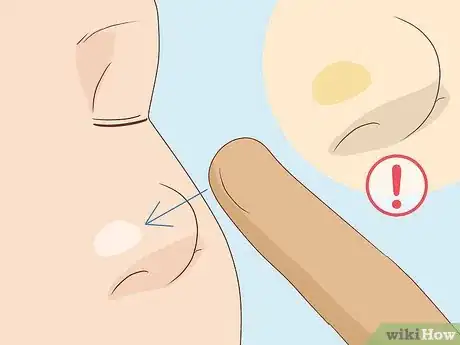
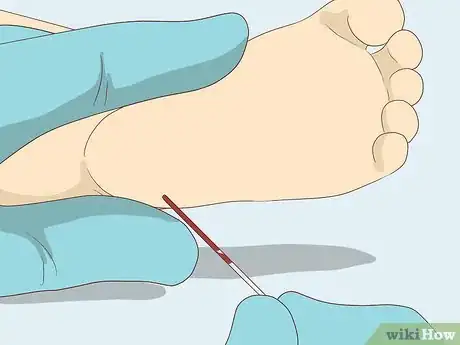
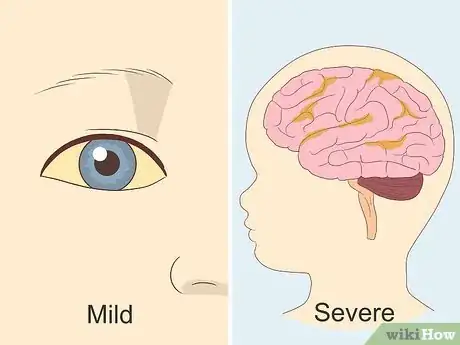
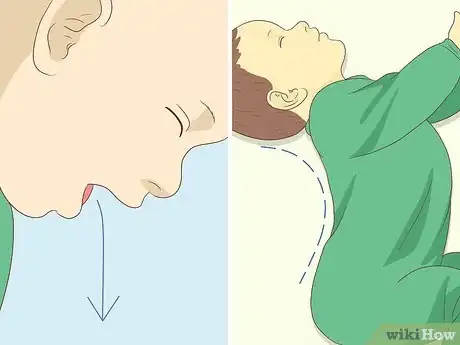
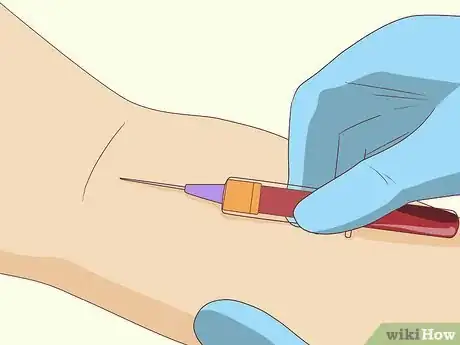
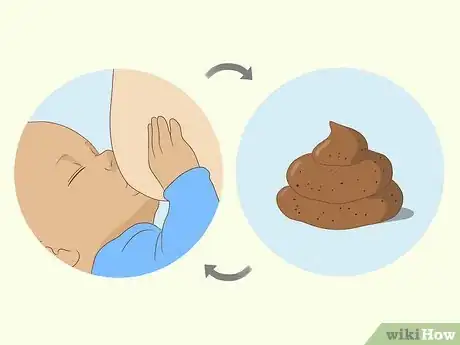
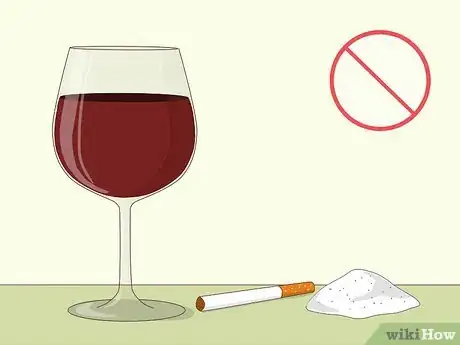
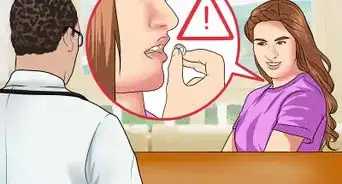


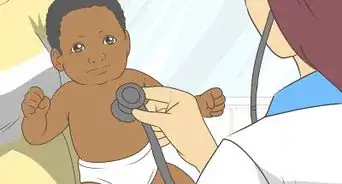
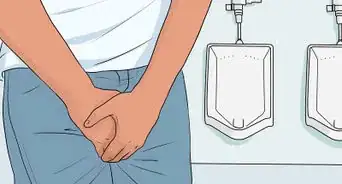
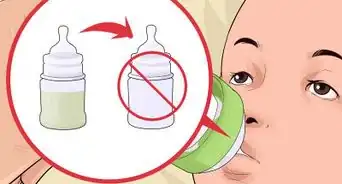
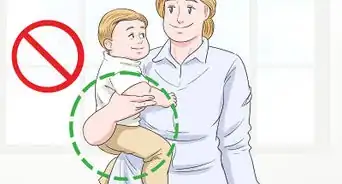


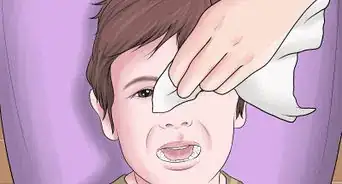

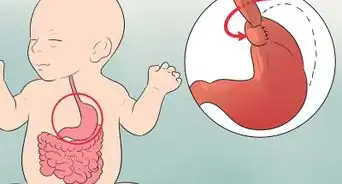

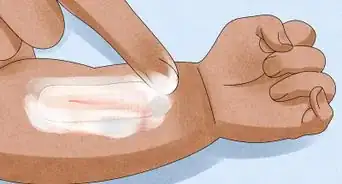








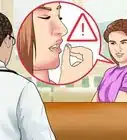


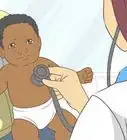



































Medical Disclaimer
The content of this article is not intended to be a substitute for professional medical advice, examination, diagnosis, or treatment. You should always contact your doctor or other qualified healthcare professional before starting, changing, or stopping any kind of health treatment.
Read More...